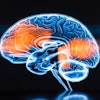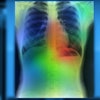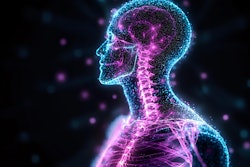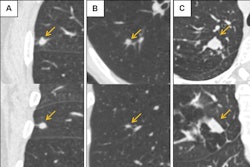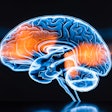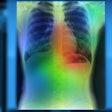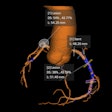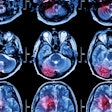There’s no end to AI’s capabilities, it seems. The technology not only holds huge clinical potential but also can transform a seriously bad dancer into a magnificent mover, musculoskeletal radiologist Dr. Woojin Kim told attendees at the European Society of Medical Imaging Informatics (EuSoMII) annual congress in Heraklion, Crete.
In an 11 October keynote lecture, “Seeing the Unseen: Advancing Generative & Agentic AI in Medical Imaging,” he showed how AI can now be used to create video clips that are simply too good to be true. “Please don’t ask me to recreate these dance moves for you now!” he quipped at the podium.
Keynote speaker Dr. Woojin Kim thrilled congress delegates with a special dance video that highlights the current capabilities of AI. The session moderators were Drs. Daniel Pinto dos Santos and Merel Huisman. All video clips and photos courtesy of EuSoMII.
Kim, who is chief strategy officer and chief medical informatics officer at HOPPR in Chicago and chief medical officer at the American College of Radiology Data Science Institute, also showed the famous viral-generated video in which the actor Will Smith does a parody of himself actually eating spaghetti.
The two-day Crete event also tackled more serious topics, including cybersecurity considerations for AI in healthcare.
Everyone must ensure they understand the cyberthreats and keep in mind their assets and vulnerabilities, according to Dr. Brendan Kelly, an Irish Clinical Academic Training (ICAT) fellow and radiology specialist registrar at St. Vincent's University Hospital in Dublin. The ICAT program provides training and support for clinicians pursuing academic and research careers.
It’s vital to recognize the impact of cyberattacks and accept that they affect every level of clinical and institutional activities, Kelly said. Technology users can mitigate their impact with the so-called CIA Triad, a foundational cybersecurity model defining three core principles of information security: confidentiality, integrity, and availability.
Of value here too is the National Institute of Standards and Technology (NIST) framework of guidelines based on identity, protection, detection, response, and recovery, he explained, before handing over to Dr. Tugba Akinci D'Antonoli, from University of Basel, Switzerland, to discuss cybersecurity considerations for large language models (LLMs) in healthcare.
 Prof. Adrian Brady (middle of photo) from Cork, Ireland, received honorary membership of EuSoMII at the annual congress in Crete.
Prof. Adrian Brady (middle of photo) from Cork, Ireland, received honorary membership of EuSoMII at the annual congress in Crete.
Kelly’s compatriot, former ESR President Prof. Adrian Brady, gave a keynote lecture, “Does radiology have a future? Reflections on 40 years of practice.”
Another standout session was “EuSoMII meets the Society of Imaging Informatics (SIIM)”. It featured a presentation by Dr. Nabile Safdar, SIIM Board Chair, from Emory University, U.S., in which he spoke about “Prompting New Frontiers: AI and the Next Era of Imaging Informatics.”
 AI vibes: Everyone knows the best chats at a congress take place over dinner!
AI vibes: Everyone knows the best chats at a congress take place over dinner!
An additional highlight was “EuSoMII meets Greece,” moderated by Dr. Mike Klontzas and Prof. Manolis Tsiknakis. Speakers focused on how AI agents could be integrated with medical image processing, frameworks and tools for trustworthy AI, and medical image processing using AI techniques.
Looking ahead, EuSoMII announced that next year’s annual congress will also take place during October in Heraklion.
"The EuSoMII spirit is all about innovation, collaboration… and a bit of fun!" Prof. Erik Ranschaert noted. "Don’t forget to pack your running shoes and join us for the Fun Run & Fun Walk by the sea — the perfect way to start your conference day!"
Using an AI voice generator, EuSoMII past presidents and AuntMinnieEurope editorial advisors Prof. Erik Ranschaert (right) and Dr. Sergey Morozov look ahead to the 2026 annual meeting, which will again take place in Heraklion, Crete.

